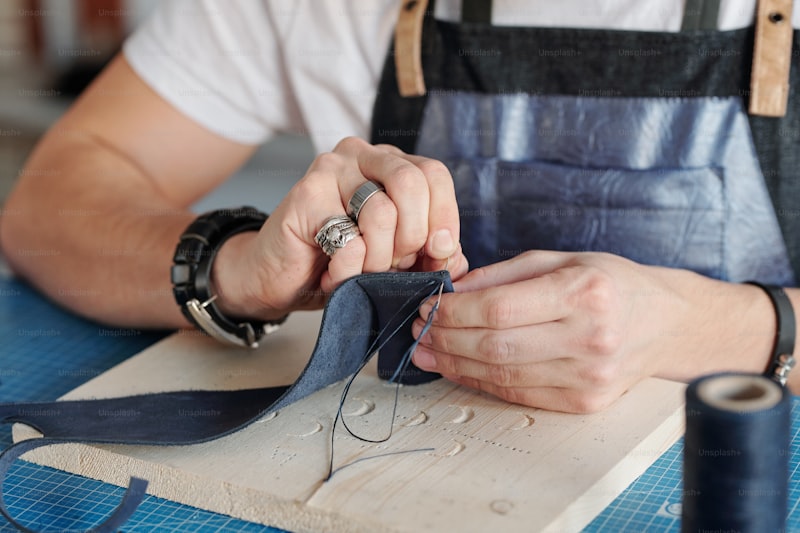Understanding Artisanal Glove Craftsmanship: A Timeless Skill
Introduction to Artisanal Glove Craftsmanship
Artisanal glove craftsmanship is a traditional art form that remains highly regarded in today’s fashion industry. This intricate and specialized skill combines the finest materials, expert techniques, and a passion for detail, resulting in high-quality gloves that are both functional and fashionable. In this article, we will explore the history, techniques, and market dynamics surrounding artisanal glove craftsmanship, while also providing insights into its growing popularity in various regions globally.
The History of Artisanal Glove Craftsmanship
Gloves have been worn in various forms since ancient times, with evidence tracing back to the Egyptians and Greeks. The artisanal craft of glove making became more prominent during the Middle Ages, particularly in Europe. Initially reserved for nobility and high-ranking individuals, gloves became a symbol of status and sophistication.
As time progressed, different cultures developed unique styles and methods of glove making. For instance, French artisans were renowned for their delicate lace gloves, while English leather gloves gained popularity for durability and elegance. Today, these historic skills are passed down from generation to generation, with artisans striving to maintain traditional techniques while also integrating modern designs.
Techniques Used in Artisanal Glove Craftsmanship
Artisanal glove craftsmanship requires a mastery of various techniques, each contributing to the overall quality and aesthetics of the final product. Below are key techniques that define this beautiful art.
| Technique | Description |
| Pattern Making | The creation of precise patterns to ensure a perfect fit is essential. Artisans employ traditional methods to develop patterns tailored to individual hand shapes. |
| Cutting | Using sharp tools, artisans carefully cut leather, fabric, or other materials while adhering to the patterns created. Precision is crucial during this step. |
| Sewing | Artisans use hand-stitching techniques to assemble the various parts of the gloves, ensuring strong seams and a neat finish. |
| Finishing | This includes polishing, adding lining, and any embellishments to create a distinct and aesthetically pleasing piece. |
The Importance of Material Selection
The choice of material plays a pivotal role in artisanal glove craftsmanship. High-quality materials not only enhance the lifespan of the gloves but also contribute to their comfort and style. Common materials include:
- Leather: Renowned for its durability and luxurious feel, various types of leather, such as lambskin, cowhide, and goatskin, are frequently used.
- Wool and Cashmere: These natural fibers provide warmth and softness, making them ideal for winter gloves.
- Synthetic Fabrics: Innovations in textiles have made synthetic materials viable alternatives, often providing breathability and moisture-wicking properties.
The Growing Market for Artisanal Gloves
As consumers increasingly seek uniqueness and quality in their fashion choices, the market for artisanal gloves has seen substantial growth. Many individuals prioritize supporting local artisans and sustainable practices over mass-produced items. This shift is particularly pronounced in regions known for their artisanal crafts, such as:
- Italy: Famous for its historic glove-making cities like Florence and Milan, Italy remains at the forefront of glove craftsmanship, blending tradition with modern designs.
- France: French artisans are celebrated for their creativity and innovation in glove fashion, often using intricate textile techniques.
- United States: There is a rising appreciation for American-made artisanal products, driven by an ethos of sustainability and local craftsmanship.
The Clientele of Artisanal Gloves
Artisanal gloves appeal to a diverse clientele, including fashion-conscious individuals, luxury consumers, and those seeking unique gifts. The market also extends to professionals in industries requiring protective gear, where quality and fit are paramount.
One notable trend is the increased interest from younger consumers, who are keen on sustainable fashion and appreciate the narrative behind artisanal products. As these young individuals transition into affluent buyers, the competition within this niche market may intensify, leading to more innovative designs and techniques.
Artisanal Glove Craftsmanship and Cultural Significance
Artisanal glove craftsmanship is not merely about creating functional apparel; it embodies a rich cultural heritage. Each pair of gloves tells a story and reflects the artisan's skill and dedication. In many cultures, gifting gloves is symbolic of friendship and respect, underlining their sentimental value.
Challenges Facing Artisanal Glove Makers
Despite its charm, the field of artisanal glove craftsmanship faces significant challenges. The rise of fast fashion has created pressure on artisans to keep prices competitive, often at the expense of quality. Additionally, the scarcity of skilled labor complicates efforts to maintain traditional methods, as fewer young people are entering the profession.
Furthermore, as artisans adapt to changing consumer preferences, they must balance their commitment to traditional techniques with the need for modern innovation. This challenge is particularly relevant in a global market where trends shift rapidly.

Conclusion and Recommendations
Artisanal glove craftsmanship is a timeless skill that continues to captivate consumers with its quality, uniqueness, and cultural significance. As the market evolves, it is essential for artisans to embrace innovation while preserving traditional techniques.
For individuals interested in purchasing artisanal gloves, consider supporting local artisans and embracing the story behind each product. Investing in high-quality gloves not only elevates your wardrobe but also helps sustain a craft that merits recognition and appreciation.
In summary: Artisanal glove craftsmanship is a fusion of history, technique, and artistry. By understanding its significance, consumers can make informed choices that contribute to sustaining this beautiful craft for the future. Be mindful of supporting artisan practices, as they are essential to preserving the cultural heritage associated with glove making.